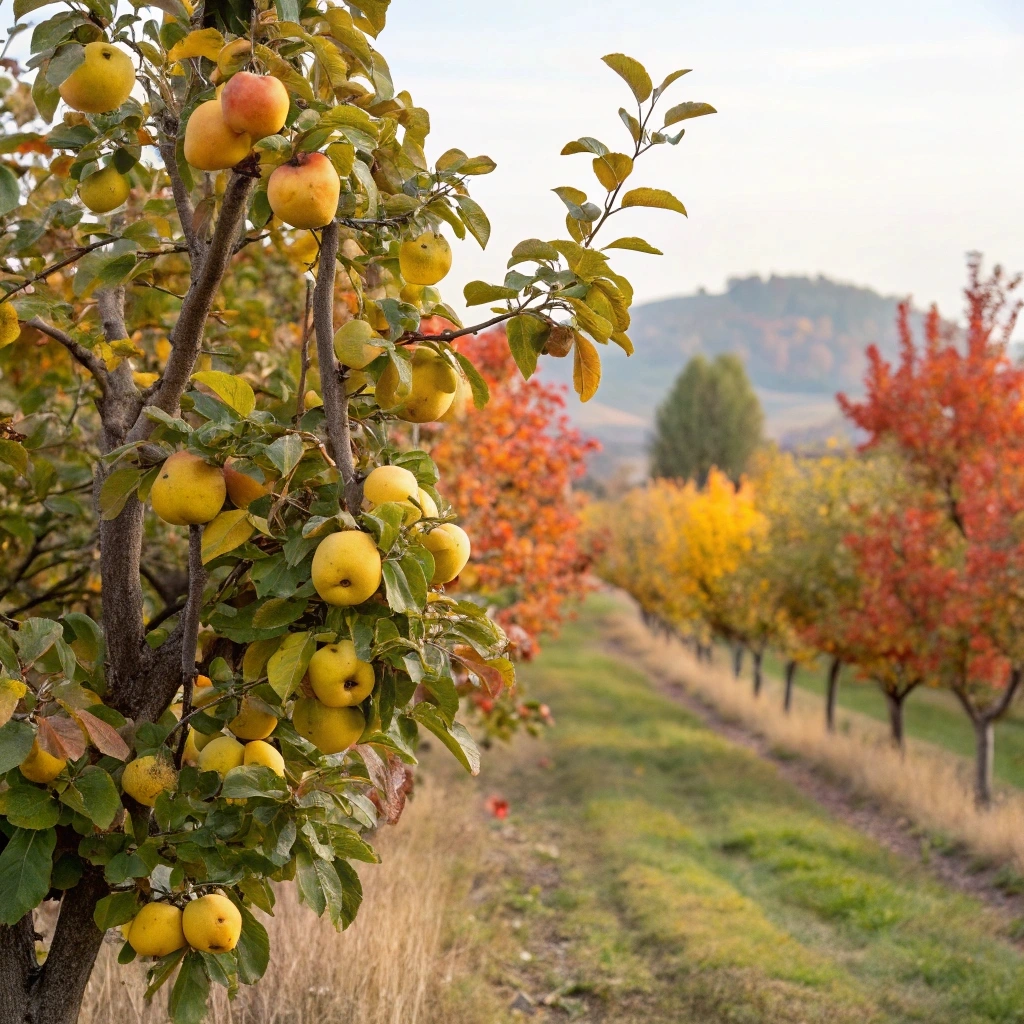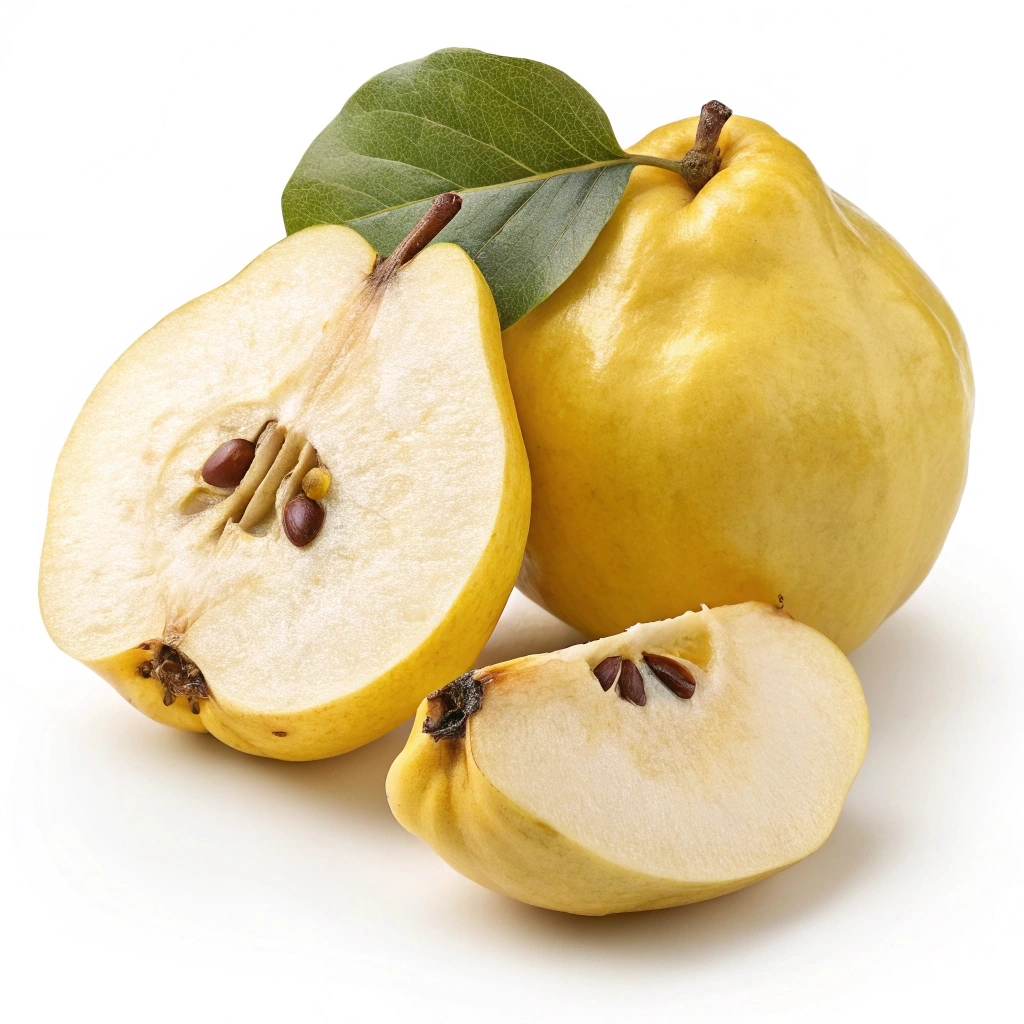Quince Fruit: The Incredible Secret of 7 Amazing Benefits
Quince fruit, a lesser-known pome fruit, offers a unique blend of sweet and tart flavors. This fruit, related to apples and pears, has been cultivated for centuries. It’s more than just a culinary ingredient. Quince fruit possesses a wide array of health benefits.
Understanding the Quince Fruit
Quince fruit is not typically eaten raw due to its hard texture and tart taste. However, when cooked, it transforms into a fragrant, sweet delight. This transformation makes it perfect for jams, jellies, and desserts. Furthermore, the fruit is packed with vitamins and minerals.
Nutritional Value
Quince fruit is a good source of Vitamin C. It also provides dietary fiber. This fiber aids in digestion. The fruit contains essential minerals like potassium and copper. Moreover, it contains smaller amounts of iron and B vitamins, contributing to overall health. These essential nutrients make quince a valuable addition to any diet.
Image Placeholder: A close-up shot of a ripe quince fruit, showcasing its golden yellow color and slightly fuzzy skin. alt text: Fresh quince fruit
Varieties of Quince
Several varieties of quince exist. Each variety offers slightly different flavors and textures. Some popular types include Smyrna, Champion, and Portugal. The ‘Aromatnaya’ variety is known for its strong fragrance, while ‘Pineapple’ quince offers a distinct tropical aroma. These variations contribute to the diverse culinary uses of quince, allowing chefs and home cooks to explore different flavor profiles in their dishes.
The Amazing Benefits of Quince Fruit
Quince fruit offers several health benefits. These benefits range from boosting the immune system to aiding digestion. Incorporating quince into your diet can significantly improve your well-being. It is truly an amazing fruit.
Rich in Antioxidants
Quince fruit is loaded with antioxidants. Antioxidants help protect the body from free radical damage. This damage can lead to chronic diseases. The antioxidants in quince can combat oxidative stress. These antioxidants, including phenolic compounds like quercetin and kaempferol, play a vital role in neutralizing free radicals, protecting cells from damage and reducing the risk of chronic illnesses such as heart disease and cancer.
Supports Digestive Health
The high fiber content in quince promotes healthy digestion. Fiber adds bulk to the stool. This helps prevent constipation. Quince can also help regulate bowel movements. The fiber in quince acts as a prebiotic, feeding beneficial gut bacteria and promoting a healthy gut microbiome. This improved gut health can lead to better nutrient absorption and overall well-being.
Boosts Immunity
Vitamin C, abundant in quince, strengthens the immune system. Vitamin C helps the body fight off infections. Regular consumption of quince can reduce the frequency of colds. Vitamin C stimulates the production of white blood cells, which are crucial for fighting off infections. It also acts as an antioxidant, protecting immune cells from damage.
May Reduce Cholesterol
Some studies suggest that quince can help lower cholesterol levels. The fruit’s pectin fiber binds to cholesterol in the digestive system. This helps eliminate it from the body. Therefore, quince fruit is great for the heart. Pectin, a soluble fiber found in quince, binds to cholesterol in the digestive tract, preventing its absorption into the bloodstream. This can lead to lower LDL (bad) cholesterol levels, reducing the risk of heart disease.
Image Placeholder: A jar of homemade quince jam, showcasing its rich amber color and inviting texture. alt text: Delicious quince fruit jam
Potential Anti-Inflammatory Properties
Quince possesses anti-inflammatory properties. These properties can help reduce inflammation in the body. This can alleviate symptoms of inflammatory conditions. This makes quince a beneficial addition to your diet. Compounds in quince, such as polyphenols, exhibit anti-inflammatory effects. These compounds can help reduce inflammation markers in the body, potentially alleviating symptoms of conditions like arthritis and inflammatory bowel disease.
Promotes Weight Management
The high fiber content in quince contributes to feelings of fullness. This can help you eat less. Furthermore, quince is relatively low in calories. This makes it a great choice for weight management. Fiber slows down digestion, keeping you feeling full and satisfied for longer. This can help reduce overall calorie intake, supporting weight loss or maintenance.
Skin Health Benefits
The antioxidants in quince can benefit skin health. They protect the skin from damage caused by UV rays and pollution. This can help maintain youthful and radiant skin. Therefore, quince fruit helps you glow. Antioxidants combat free radicals, which can cause premature aging and skin damage. By protecting the skin from environmental stressors, quince can help maintain a healthy complexion.

Using Quince Fruit in the Kitchen
Quince fruit is incredibly versatile in the kitchen. While not typically eaten raw, cooking transforms its flavor and texture. There are numerous ways to enjoy this unique fruit.
Traditional Preparations
Traditionally, quince is used to make jams and jellies. These preserves capture the fruit’s unique flavor. Quince paste, also known as membrillo, is a popular treat in Spain. Quince cheese, another traditional preparation, is often served with cheese and crackers. These traditional methods showcase the fruit’s ability to transform into a delicious and versatile ingredient.
Modern Culinary Uses
Chefs are increasingly incorporating quince into modern dishes. It pairs well with meats, cheeses, and desserts. Quince can add a unique twist to pies, tarts, and sauces. Experiment with quince to discover new culinary delights. Quince can be used in savory dishes, such as quince-glazed pork or quince chutney. It can also be added to salads for a touch of sweetness and tartness.
Image Placeholder: A quince pie, showcasing the fruit’s beautiful color and texture. alt text: Homemade quince fruit pie
Simple Quince Recipes
One simple recipe involves poaching quince in wine. Another easy preparation is roasting quince with spices. These methods enhance the fruit’s natural sweetness. You can also add quince to your morning oatmeal for added fiber. Quince can also be made into a delicious syrup. The syrup can be used to flavor drinks or desserts.
Growing Your Own Quince Tree
Growing your own quince tree can be a rewarding experience. These trees are relatively easy to care for. They offer beautiful blossoms in the spring. They also provide you with a bountiful harvest of quince fruit in the fall.
Planting and Care
Quince trees thrive in well-drained soil. They require full sun for optimal growth. Regular pruning helps maintain their shape. Additionally, it encourages fruit production. Quince trees are relatively pest and disease resistant, making them a low-maintenance option for home gardeners. They also tolerate a variety of soil types, making them adaptable to different growing conditions.
Harvesting and Storage
Quince fruits are typically harvested in late fall. They are ready when they turn a golden yellow color. Store the fruits in a cool, dry place. This will extend their shelf life. Quince can be stored for several months in the refrigerator or a root cellar, allowing you to enjoy the fruit throughout the winter.
Image Placeholder: A quince tree laden with ripe fruit, showcasing its vibrant color and abundance. alt text: Quince fruit tree in full bloom
Potential Challenges
Pests and diseases can sometimes affect quince trees. Regular monitoring and preventative measures are important. Ensuring proper airflow around the tree can also help. Moreover, water the tree regularly. Fire blight, a bacterial disease, can be a concern for quince trees. Regular pruning and proper sanitation can help prevent the spread of this disease.
Incorporating Quince Fruit into Your Diet
There are many ways to incorporate quince fruit into your diet. Its unique flavor and health benefits make it a worthwhile addition. Start exploring its culinary possibilities today. It is an amazing fruit to try.
Breakfast Ideas
Add quince to your oatmeal or yogurt. This will provide a boost of fiber and flavor. You can also make quince compote to top pancakes or waffles. These are great ways to start your day. Quince jam is a delicious and healthy alternative to traditional jams and jellies.
Lunch and Dinner Options
Quince pairs well with roasted meats. It can also be used in savory tarts. Add quince to salads for a sweet and tart contrast. These additions elevate the flavor of your meal. Quince can be used in stuffings for poultry. It adds a unique flavor and moisture to the dish.
Dessert Delights
Quince is a classic ingredient in desserts. Use it to make jams, jellies, and pies. Quince paste is a delicious accompaniment to cheese. These desserts showcase the fruit’s versatility. Quince can also be used in crumbles, cobblers, and bread puddings.
Quince Fruit: A Global Perspective
Quince fruit has a rich history. It’s cultivated in many parts of the world. Different cultures use it in unique ways. Therefore, the uses of quince are diverse.
Historical Significance
Quince has been cultivated since ancient times. It was highly valued by the Greeks and Romans. Its significance is evident in historical texts. Quince fruit has been a beloved ingredient. In ancient Greece, quince was associated with Aphrodite, the goddess of love and beauty.
Cultural Uses
In some cultures, quince is a symbol of love and fertility. It is often given as a gift during weddings. In other cultures, it is used in traditional medicine. The cultural uses of quince are varied. In some Middle Eastern countries, quince is used to make a traditional sweet dish called “ayva tatlisi.”
Regional Variations
Different regions use quince in different ways. In Spain, quince paste is a staple. In the Middle East, quince is often stewed with meat. The regional variations are fascinating. In Portugal, quince is used to make a liqueur called “licor de marmelo.”
Potential Side Effects and Precautions
While quince fruit offers numerous benefits, there are some precautions to consider. It’s important to be aware of potential side effects. Knowing this will help ensure safe consumption.
Allergies
Some people may be allergic to quince. If you experience allergic symptoms, discontinue use. Consult with a healthcare professional. This is important to ensure safety. Allergic reactions to quince can range from mild skin irritation to more severe symptoms like difficulty breathing.
Interactions with Medications
Quince may interact with certain medications. If you are taking medications, consult your doctor before consuming quince regularly. This is important to avoid adverse effects. Quince contains compounds that may affect the absorption or metabolism of certain drugs.
Moderation is Key
As with any food, moderation is key. Excessive consumption of quince may cause digestive upset. Enjoy it in moderation as part of a balanced diet. Quince can then be part of a healthy diet. The high fiber content in quince can cause bloating and gas if consumed in large quantities.
The Future of Quince Fruit
The future of quince fruit is promising. Its unique flavor and health benefits are gaining recognition. More people are discovering its versatility. Therefore, expect more quince products.
Growing Popularity
Quince is becoming more popular among chefs and home cooks. Its unique flavor profile makes it a desirable ingredient. More people are experimenting with quince. This increases the demand for the fruit. As consumers seek out unique and healthy ingredients, quince is poised to become a more mainstream fruit.
Research and Development
Ongoing research is exploring the potential health benefits of quince. New studies are uncovering its therapeutic properties. This research will further enhance its value. Future research may focus on the potential of quince to prevent or treat chronic diseases.
Sustainable Cultivation
Efforts are being made to promote sustainable cultivation practices for quince. This ensures the long-term availability of the fruit. Sustainable practices benefit the environment. They also benefit the economy. Sustainable farming practices can help protect the environment and ensure the long-term viability of quince production.
Conclusion
Quince fruit, often overlooked, offers a wealth of benefits and culinary possibilities. From its rich antioxidant content to its ability to support digestive health and boost immunity, quince is a powerhouse of nutrition. Its unique flavor profile and versatility in the kitchen make it a delightful addition to any diet. Whether you’re growing your own quince tree, experimenting with new recipes, or simply enjoying a jar of quince jam, this amazing fruit is sure to impress. So, embrace the incredible secret of quince fruit and discover the many ways it can enhance your health and culinary experiences.

Quince Fruit Fundamentals
Quince fruit offers a unique flavor profile. It’s a blend of tartness and sweetness. This fruit is not typically eaten raw. Cooking transforms its texture and taste. The quince fruit is a versatile ingredient.
Key Benefits
Quince boasts a high fiber content. It is also rich in Vitamin C. These nutrients contribute to digestive health. They also help in boosting the immune system.
Potential Drawbacks
Raw quince is hard and tart. Some people may be allergic to it. Moderation is essential. Excessive consumption can cause digestive issues.
FAQ
What does quince fruit taste like?
Quince fruit has a unique flavor. It’s tart and slightly sweet when raw. Cooking mellows the tartness. The cooked fruit has a sweet, aromatic flavor.
How do you prepare quince fruit?
Quince fruit is typically cooked. It can be baked, poached, or stewed. Cooking softens the fruit. It also enhances its sweetness.
What are the health benefits of quince fruit?
Quince fruit offers several health benefits. It’s rich in antioxidants. It also supports digestive health. Furthermore, it boosts immunity.
Can you eat quince fruit raw?
While you can eat quince fruit raw, it’s not recommended. Raw quince is very hard and tart. Cooking makes it more palatable.
Where can you buy quince fruit?
Quince fruit can be found at farmers’ markets. Also try specialty grocery stores. Availability is typically in the fall.

